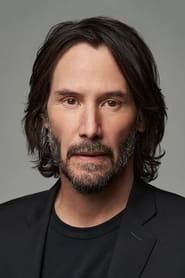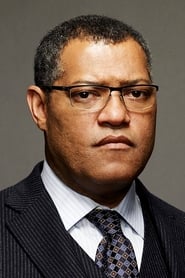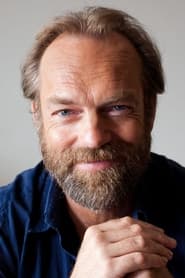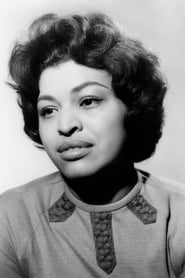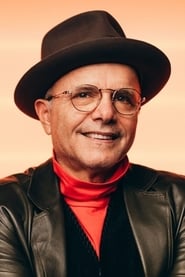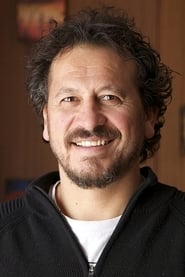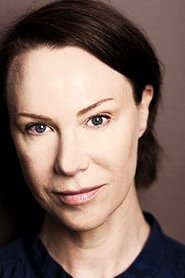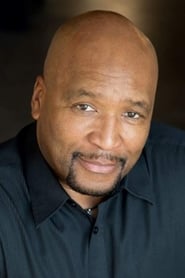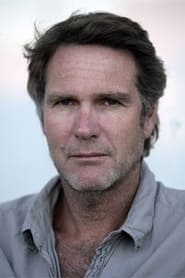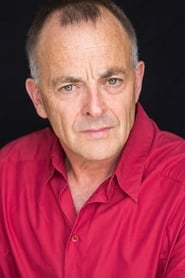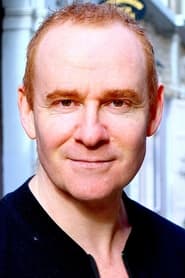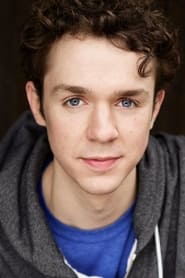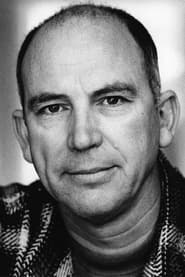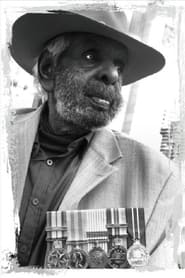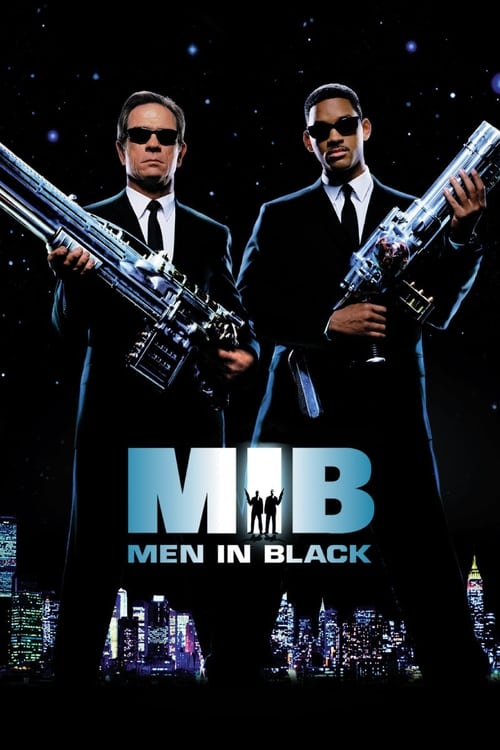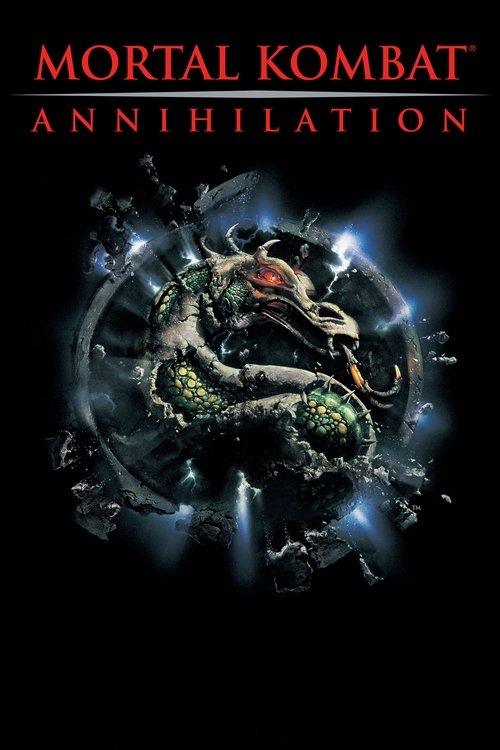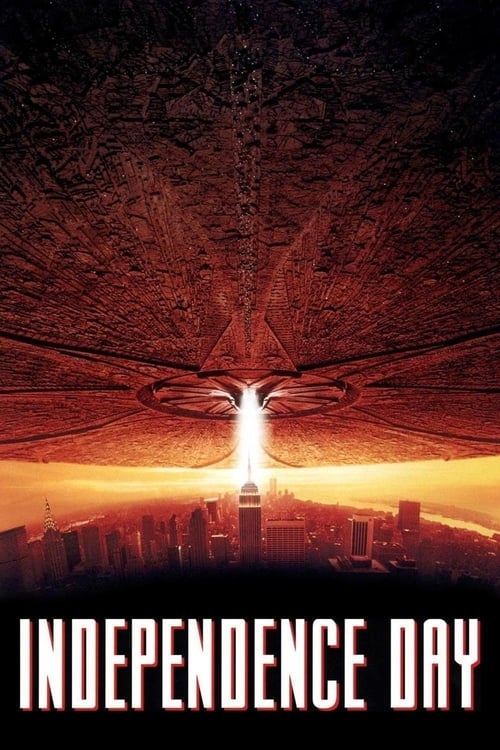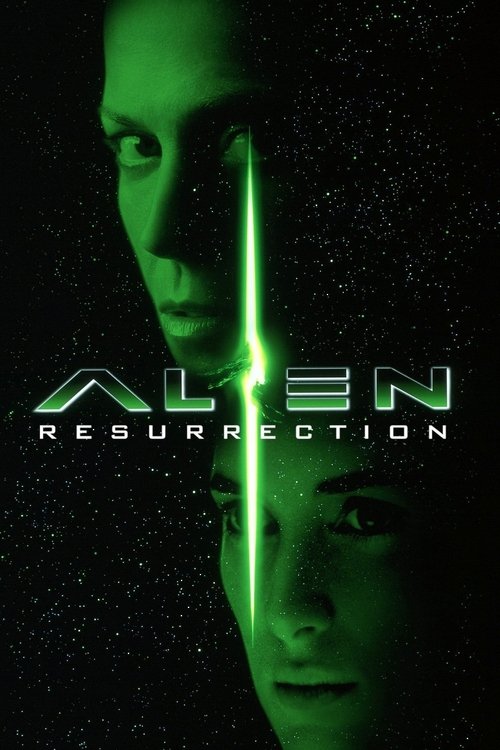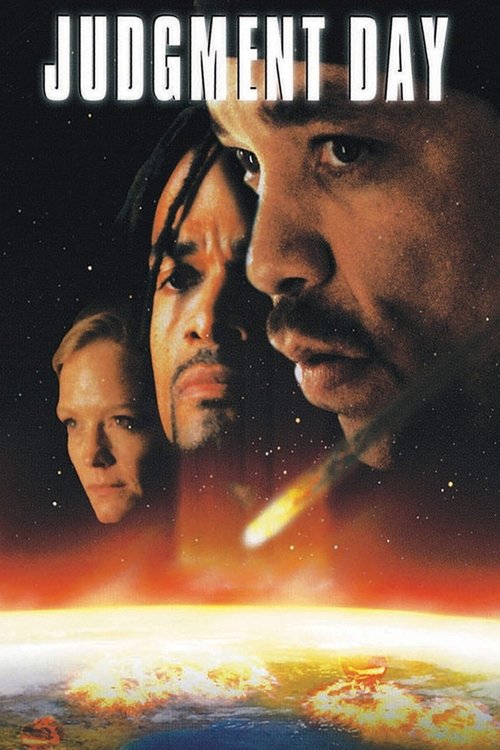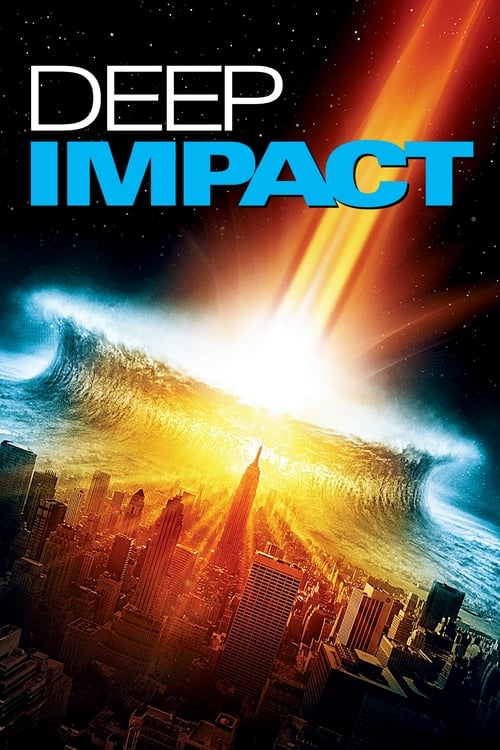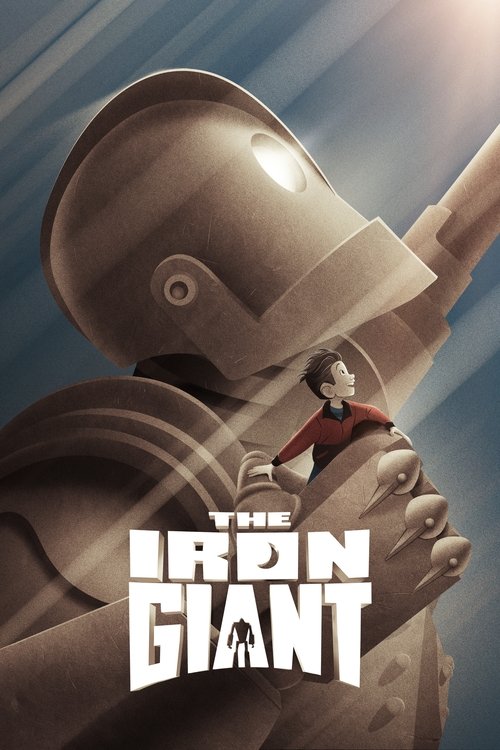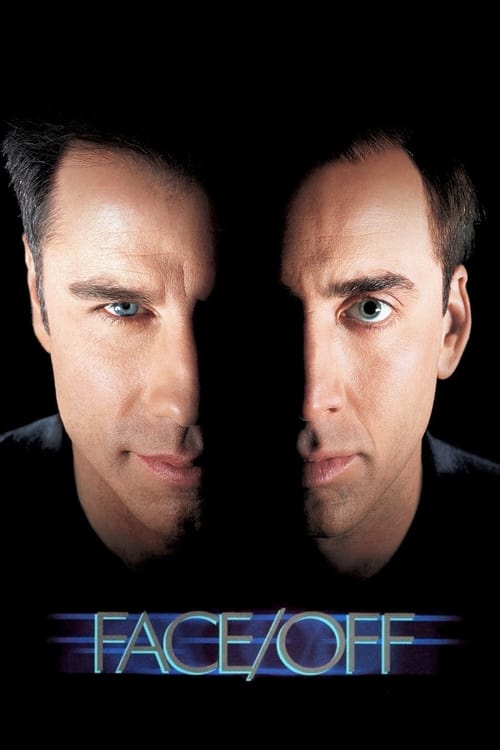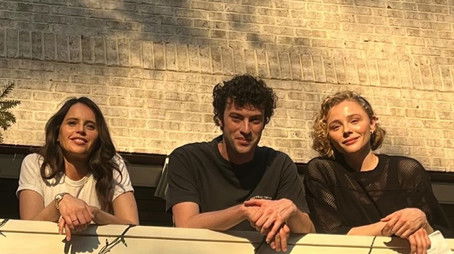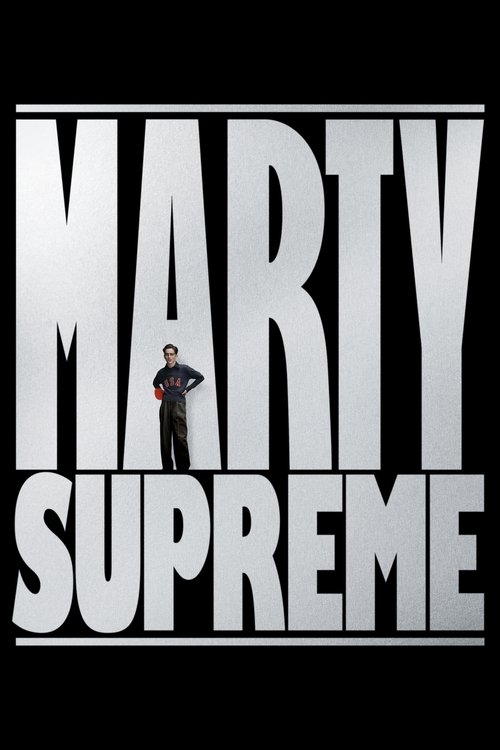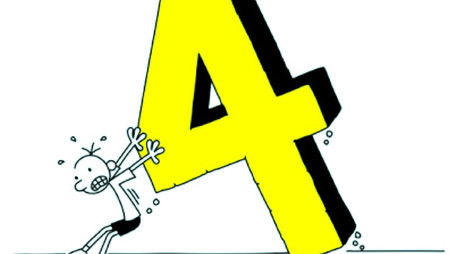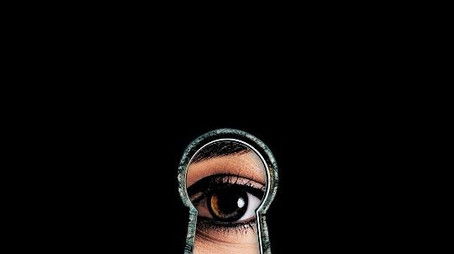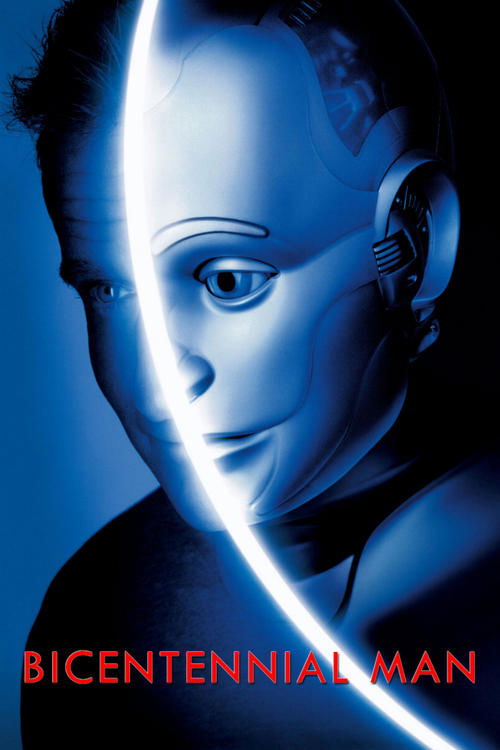
Ask Your Own Question
What is the plot?
At night in 1999, the city is shrouded in rain and darkness. Police cruisers converge on a decrepit apartment building, sirens slicing through the silence. Inside, Trinity--her black leather and sharp gaze unmistakable--types furiously at a computer terminal. Suddenly, the door bursts open. Officers swarm in, but Trinity moves with impossible speed, her limbs a blur as she dispatches them with acrobatic precision. She flees to the rooftop, chased by the relentless Agents, led by the cold, mechanical Agent Smith. The chase is breathless, Trinity leaping across rooftops, twisting midair, bullets whistling past. She crashes through a window, lands hard, and sprints to a ringing public phone. As she snatches up the receiver, her body vanishes, leaving only shattered glass as Smith's car smashes into the booth.
Elsewhere, Thomas Anderson--known in the hacking underworld as Neo--sits slumped at his computer in his cramped apartment. His screen flickers with cryptic messages: "Wake up, Neo. The Matrix has you. Follow the white rabbit." Confused but compelled, Neo sells illegal software to a group of ravers. He notices a white rabbit tattoo on one of the women, and, following the message's instruction, joins them at a pulsing nightclub. There, Trinity approaches him through the haze and music. Her words cut through the noise: "I know why you're here, Neo. It's the question that drives us. It's the question that brought you here. You know the question, just as I did." Neo's world tilts; he senses that reality is slipping.
The next morning, Neo wakes late for work at Metacortex, a towering office building. His boss, Mr. Rhineheart, reprimands him, calling him "Mr. Anderson" and warning that his life is at risk if he doesn't conform. But Neo's mind is elsewhere, haunted by the previous night. Suddenly, a courier delivers a package--a cell phone. It rings immediately. Morpheus, the legendary hacker, is on the line, his voice calm but urgent. "They're coming for you, Neo." Morpheus guides Neo through the cubicles, instructing him to climb out onto the ledge to escape. Neo, terrified, hesitates and is captured by Agents led by Smith.
In a sterile interrogation room, Smith's face is impassive. He demands information about Morpheus, but Neo refuses. Smith's mouth twists into a sneer as Neo's lips fuse shut, suffocating him. Smith implants a writhing robotic bug into Neo's abdomen, the pain excruciating. Neo blacks out, jolting awake in his apartment, convinced it was a nightmare--until Trinity and her crew arrive. In a tense, surgical moment, they extract the bug from Neo's body, proving the horror was real. They whisk him away to meet Morpheus.
Inside a dimly lit, abandoned building, Morpheus stands tall, his presence magnetic. He offers Neo a choice: the blue pill to return to ignorance, or the red pill to learn the truth. "This is your last chance. After this, there is no turning back. You take the blue pill--the story ends. You wake up in your bed and believe whatever you want to believe. You take the red pill--you stay in Wonderland, and I show you how deep the rabbit hole goes." Neo chooses the red pill. His world fractures, reality warping as he convulses and is pulled from the Matrix.
Neo awakens submerged in viscous fluid, encased in a pod, cables threaded through his body. He gasps, surrounded by endless fields of identical pods--human beings harvested like crops. Machines tend to the pods, their metallic limbs cold and efficient. A mechanical arm ejects Neo, and he is rescued by Morpheus's hovercraft, the Nebuchadnezzar. The crew--Trinity, Tank, Dozer, Apoc, Switch, and Cypher--welcome him to the devastated real world. Morpheus explains: "The Matrix is a computer-generated dream world built to keep us under control in order to change a human being into this." He holds up a battery. The true year is approximately 2199. Humanity lost a war with intelligent machines, who now farm humans for bioelectric energy. Zion, the last human city, lies deep underground, its existence a beacon of hope.
Neo struggles to accept the truth. Morpheus believes Neo is "the One," a prophesied savior destined to free humanity. The crew trains Neo, uploading combat skills and martial arts directly into his brain. In the Matrix, Neo spars with Morpheus in a dojo, moving faster and hitting harder than he ever thought possible. "Don't think you are. Know you are," Morpheus instructs. Neo leaps impossibly high, but doubts linger.
The crew enters the Matrix to visit the Oracle, a wise, maternal figure living in a cozy apartment. Children bend spoons with their minds, and the Oracle offers cryptic guidance: "You're waiting for something… maybe the next life. Who knows?" She tells Neo he is not the One, but will have to choose between his life and Morpheus's. The prophecy weighs heavily on Neo.
Meanwhile, Cypher, disillusioned and bitter, meets Agent Smith in a simulated restaurant. Over a juicy steak, Cypher confesses his regret: "Ignorance is bliss." He strikes a deal to betray his crew in exchange for a comfortable life in the Matrix, his memories erased. Smith's hatred for humanity simmers; he reveals to Morpheus later, "Human beings are a disease, a cancer of this planet. You're a plague, and we are the cure." Smith's contempt is palpable.
The crew is ambushed in the Matrix, betrayed by Cypher. Agents and police swarm the Oracle's building. Morpheus sacrifices himself, battling Smith and the other Agents to allow Neo and Trinity to escape. He is captured, restrained in a government skyscraper, tortured as the Agents attempt to extract Zion's access codes from his mind. Smith, frustrated by his own existence, vents to Morpheus: "I must get out of here. I must get free. And in this mind is the key. My key!".
Back on the Nebuchadnezzar, Cypher exits the Matrix first. He grabs a lightning gun and turns on his crew. He kills Dozer instantly with a blast to the chest. He then approaches Tank and shoots him, leaving him badly wounded but alive. Cypher returns to the Matrix operator station, unplugging Apoc and Switch from the Matrix, killing them instantly in the real world. As Cypher prepares to kill Neo and Trinity, he taunts Trinity: "If Morpheus was right, then there's no way I can pull this plug. I mean, if Neo's the One, then there'd have to be some kind of miracle to stop me. Right? I mean, how can he be the One if he's dead?" Just as Cypher is about to kill Neo, Tank, bloodied but conscious, grabs the gun and kills Cypher, saving Neo and Trinity.
Morpheus is still imprisoned, his mind under assault. Neo realizes the Oracle's prophecy: he must choose to risk himself for Morpheus. "I'm not the One, Trinity," Neo confides, but he cannot abandon Morpheus. Neo and Trinity re-enter the Matrix, arming themselves for war. They storm the skyscraper in a spectacular assault, mowing down guards and SWAT teams in slow-motion ballets of bullets and acrobatics. The lobby explodes in chaos, pillars shattering as Neo and Trinity dodge gunfire with superhuman reflexes. They ascend to the roof, where Neo, for the first time, dodges bullets fired by an Agent, moving so fast the world seems to slow around him. Trinity kills the Agent with a point-blank shot to the head.
They reach Morpheus, who is chained and drugged. Trinity whispers, "Get up, Morpheus. Get up." He breaks free, and together they race to the roof. Morpheus leaps across to a waiting helicopter, Neo piloting despite never having flown before--Tank uploads the skills into his brain in seconds. Neo and Trinity unleash a torrent of bullets into the room where Morpheus was held, killing guards and forcing the Agents to retreat. The helicopter is hit, and Neo, harnessed to a rope, saves Trinity from falling as the helicopter crashes in a fiery explosion. The three escape to a safe location.
Morpheus and Trinity use a telephone to exit the Matrix, but Neo is left behind, hunted by Agents. In a deserted subway station, Neo faces Smith alone. The confrontation is intense, fists and bullets flying. Smith is relentless, his strength overwhelming. Neo fights back, gaining confidence, but is eventually shot and seemingly killed by Smith. In the real world, Trinity cradles Neo's lifeless body, whispering through tears, "The Oracle told me I would fall in love with the One, and that man would be the One. So you see, you can't be dead." She kisses Neo, and his heart stirs. Neo awakens inside the Matrix, perceiving the world as streams of green code. He stands as bullets fly toward him, calmly raising a hand to stop them midair. He moves faster than Smith, dodging attacks effortlessly.
Smith, enraged, lunges at Neo. Neo leaps into Smith's body, and the Agent convulses, his code destabilizing. Smith explodes from within, destroyed utterly. The remaining Agents flee, unable to comprehend Neo's power. Neo sprints to the exit phone, pursued by Sentinels in the real world, their metallic tentacles tearing through the Nebuchadnezzar's hull. Tank triggers the ship's electromagnetic pulse just as Neo escapes, disabling the Sentinels and saving the crew.
The Nebuchadnezzar's battered survivors--Neo, Trinity, Morpheus, and Tank--gather in relief. The prophecy has been fulfilled. Neo, now fully awakened as the One, returns to the Matrix for a final message. He calls the machines, his voice resolute: "I know you're out there. I know that you're afraid. You're afraid of us. You're afraid of change. I'm going to show these people what you don't want them to see. I'm going to show them a world without you. A world without rules and controls, without borders or boundaries. A world where anything is possible. Where we go from there is a choice I leave to you." Neo steps into the street, surrounded by oblivious citizens, and launches himself into the sky, flying above the city, a living legend. The screen fades to black, the revolution begun.
Every death, every betrayal, every revelation has led to this moment. The Matrix is forever changed. Neo lives, the savior of humanity, and the future is unwritten.
What is the ending?
At the end of The Matrix, Neo confronts Agent Smith and realizes his true potential as "The One." He defeats Smith and gains control over the Matrix, demonstrating his newfound abilities. He then makes a phone call, promising to free humanity from the Matrix, and flies away, symbolizing hope and liberation.
As the climax of The Matrix unfolds, Neo, played by Keanu Reeves, finds himself in a high-stakes confrontation with Agent Smith, portrayed by Hugo Weaving. The scene is set in a desolate, abandoned building, where the atmosphere is thick with tension. Neo, having just escaped from a previous encounter with the agents, is now fully aware of his identity as "The One." The air crackles with anticipation as he faces Smith, who embodies the oppressive force of the Matrix.
The fight begins with a flurry of punches and kicks, showcasing Neo's agility and strength. The choreography is fluid and intense, with Neo dodging bullets in slow motion, a hallmark of the film's visual style. As the battle escalates, Neo's confidence grows; he begins to understand that he can manipulate the Matrix's rules. The emotional stakes are high, as Neo grapples with the weight of his destiny and the lives of those still trapped within the Matrix.
In a pivotal moment, Neo is cornered by Smith, who taunts him with the futility of resistance. However, Neo's internal struggle transforms into a resolute determination. He embraces his role as "The One," and in a breathtaking display of power, he defeats Smith, demonstrating his ability to bend the Matrix to his will. This victory is not just physical; it symbolizes Neo's acceptance of his identity and purpose.
Following the confrontation, Neo makes a phone call to the Matrix, a symbolic act of defiance and hope. He speaks directly to the people still trapped in the simulated reality, promising to free them from their bondage. His words resonate with a sense of urgency and conviction, as he declares, "I can show you a world without rules and controls, without borders or boundaries." This moment encapsulates the film's central theme of liberation and the quest for truth.
As the film draws to a close, Neo steps out of a building and takes flight, soaring above the cityscape. The visual of him flying is both exhilarating and symbolic, representing his transcendence over the limitations of the Matrix. The camera captures the vastness of the city below, emphasizing Neo's newfound freedom and power. This act of flight signifies not only his personal liberation but also the potential for humanity to break free from the constraints of the Matrix.
The fates of the main characters are revealed in the aftermath of these events. Morpheus, played by Laurence Fishburne, remains a steadfast mentor and ally to Neo, having believed in him throughout the journey. Trinity, portrayed by Carrie-Anne Moss, stands by Neo's side, her love and support integral to his transformation. The fate of Agent Smith is left ambiguous; he is defeated but not destroyed, hinting at the ongoing struggle against the forces of control.
In the final moments, the film leaves viewers with a sense of hope and possibility. Neo's journey is just beginning, and the promise of a world free from the Matrix lingers in the air, inviting the audience to ponder the implications of choice, freedom, and the nature of reality itself.
Is there a post-credit scene?
The Matrix, produced in 1999, does not have a post-credit scene. After the credits roll, the film concludes without any additional scenes or content. The story wraps up with Neo's declaration of his intention to free humanity from the Matrix, followed by his flight into the sky, symbolizing his newfound powers and the hope for a future beyond the confines of the simulated reality. The absence of a post-credit scene maintains the film's focus on its central themes of reality, freedom, and the struggle against oppression.
What is the significance of the red pill and the blue pill in The Matrix?
In The Matrix, the red pill represents the choice to learn the unsettling truth about reality, while the blue pill symbolizes the option to remain in comfortable ignorance. When Neo, played by Keanu Reeves, is offered the choice by Morpheus, he chooses the red pill, which leads him to awaken in the real world, a desolate future where humanity is enslaved by machines.
Who is Agent Smith and what is his role in the story?
Agent Smith, portrayed by Hugo Weaving, is a sentient program within the Matrix tasked with maintaining order and eliminating threats to the system. He embodies the oppressive nature of the Matrix, often expressing disdain for humanity. His relentless pursuit of Neo and his growing desire to escape the confines of the Matrix highlight his complex character arc.
What is the Oracle's role and what does she tell Neo?
The Oracle, a wise and enigmatic figure, serves as a guide for Neo and other characters in the Matrix. She provides cryptic insights into their destinies. When Neo visits her, she tells him that he is not 'The One,' which confuses him but ultimately sets him on a path of self-discovery and belief in his potential.
How does Neo's relationship with Trinity develop throughout the film?
Neo's relationship with Trinity, played by Carrie-Anne Moss, evolves from initial intrigue to deep emotional connection. Trinity believes in Neo's potential as 'The One' and supports him throughout his journey. Their bond strengthens as they face danger together, culminating in a romantic connection that symbolizes hope and unity against the oppressive forces of the Matrix.
What is the significance of the Nebuchadnezzar and its crew?
The Nebuchadnezzar is the hovercraft captained by Morpheus and serves as a base for the crew fighting against the machines. It symbolizes the last bastion of human resistance. The crew, including characters like Tank, Dozer, and Apoc, represents the diverse group of individuals united in their fight for freedom, each contributing unique skills and perspectives to the struggle against the Matrix.
Is this family friendly?
The Matrix, produced in 1999, contains several elements that may not be suitable for children or sensitive viewers. Here are some potentially objectionable or upsetting aspects:
-
Violence: The film features intense action sequences, including gunfights, martial arts combat, and scenes of characters being shot or injured. The violence is stylized but can be graphic.
-
Death: Characters experience death in various forms, including the deaths of key characters that can be emotionally impactful.
-
Existential Themes: The film explores complex philosophical ideas about reality, control, and freedom, which may be confusing or unsettling for younger viewers.
-
Mature Language: There is occasional strong language throughout the film, which may not be appropriate for all audiences.
-
Disturbing Imagery: Some scenes include unsettling visuals, such as characters being plugged into machines or experiencing traumatic events.
-
Drug References: The film includes references to drug use, particularly in the context of the red pill/blue pill metaphor, which symbolizes choice and awakening.
-
Intense Emotional Moments: Characters face significant emotional struggles, including feelings of isolation, betrayal, and fear, which may resonate deeply with sensitive viewers.
These elements contribute to the film's overall tone and themes, making it more suitable for mature audiences.



